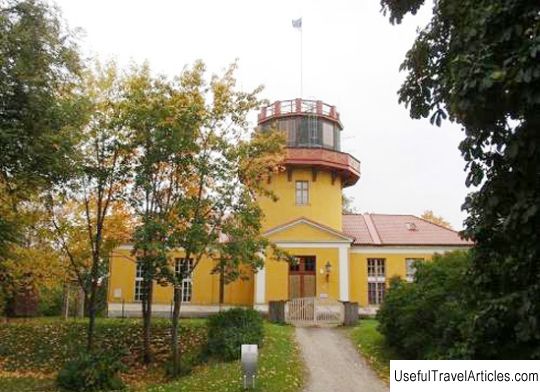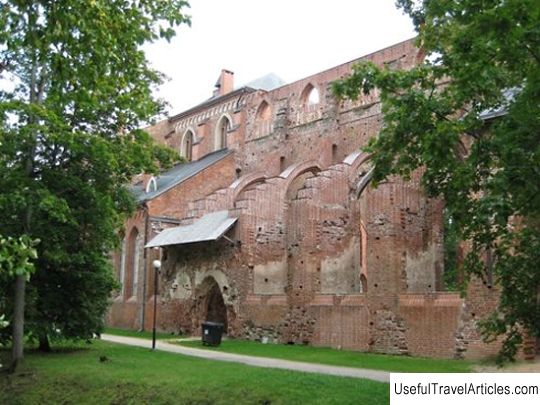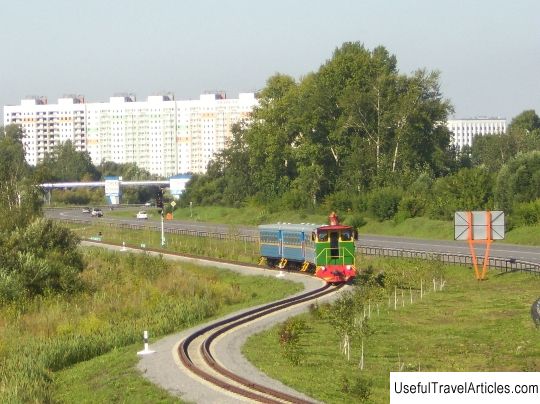Tartu Observatory description and photos - Estonia: Tartu
Rating: 8,2/10 (6800 votes) 
Tartu Observatory description and photos - Estonia: Tartu. Detailed information about the attraction. Description, photos and a map showing the nearest significant objects. Photo and descriptionDuring the construction of university buildings on the territory of Toomemagi Park in 1808, the turn came to the construction of an observatory. Initially it was planned to build it in one of the towers of the Dome Cathedral, but these plans were not fulfilled. The construction commission has identified the site for the future building of the observatory at the highest point of Toomemagi, at 66.8 m above sea level, where the building of the Bishop's castle used to be. The construction began in 1808. By the spring, when some of the university buildings were already built, and the construction of the main building was nearing completion, the turn of the construction of the observatory came. Its project was prepared by the university architect I.B. Krause. According to the project, the building was supposed to be practical, with simple, strict lines. In addition to I. B. Krause, other specialists took part in the construction - G.F. Parrot, I.V. Pfaff and E.K.F. Knorre. The project was based on the samples of observatories in the German cities of Gottingen and Gotha. The Tartu Observatory was made of powerful stone pillars, its construction was completed in 1810. The finished building was a one-story brick building with a hip roof. On one side there was a round two-story tower, which was originally covered with a dome. However, in 1824, when the large telescope arrived, the fixed tower had to be rebuilt. The new tower rotated on casters and was completed in 1825. And since that year, the observatory building has not undergone any further reconstruction. Inside, the building was also utilitarian and simple. In the center were the work rooms, and on the sides were large halls. In 1819, a house for astronomers was built next to the observatory, which after 2 years was connected to it by a passage. The observatory also includes a round pavilion built in 1897. It houses the Petzval astrograph - a device for photographing celestial objects. Soon, the Tartu Observatory gained worldwide fame, mainly thanks to the efforts of Friedrich Georg Wilhelm Struve, director of the Tartu and later Pulkovo Observatory. He worked in Tartu from 1913 to 1939. When he arrived at the observatory, it was not yet operational. Some of the devices have not been assembled, some have not yet arrived, and some have not even been ordered. So, Struve began his work here with the installation of instruments that were in stock and ordering the necessary ones. His merit is that he was able to equip the observatory in the best and most modern way at that time. This significantly contributed to the fact that the scientists working at the observatory were able to rise to the world level of science. During the management of the Struve Observatory, the institution was equipped with the Reichenbach and Ertel meridian circle, as well as the Fraunhofer refractor, at that time the largest in the world. Thanks to the presence of these devices, the observatory was considered the best in the world in terms of technical equipment. Regular observations at the Tartu Observatory began in 1814. Struve also became famous for his work in the field of binary stars. Although the discovery of double stars belongs to the English astronomer W. Herschel, Struve made a great contribution to the study of these space objects. In particular, the scientist has done an enormous amount of work to create an accurate technique for observing binary stars. His works have still not lost their relevance. Under Struve, a catalog of binary stars was compiled with a description of 3112 such objects, and 2343 of them were discovered by him himself. He was also the first to prove the existence of light-absorbing matter in interstellar space. He also studied planets and comets. Struve's merit is that the Tartu Observatory became a center where many scientists who later directed other observatories received training. In addition to Struve, many other scientists who contributed to science worked here: O. Backlund, E. Hartwig, T. Klausen, T. Banachevich, E. Schoenberg and others. All devices used throughout the history of the observatory, have survived to this day. They can be seen in the eastern hall of the Tartu Observatory, which has now been turned into a museum. Gradually the institution has lost its leading value. The First World War and the political situation in Estonia in the 1920s and 1930s did not favor the development of the Tartu Observatory. Research of a theoretical nature took the leading place. Later, the building built on Toomemagi did not meet the requirements of modern research work. They began to build a new building 25 km from the existing one - in Tyravere. The new observatory was opened in 1964 and bears the name of Struve. A park has also been set up near the new observatory, with the belief that it will become as wonderful as the park on Toomemagi Hill. Due to the construction of the new building, the old observatory has lost its original significance and is being turned into a museum. On April 27, 2011, the bicentennial of the observatory was celebrated in Tartu. Since 2009, restoration work has been carried out in the institution, and after their completion the observatory will reopen, but already as a museum.      We also recommend reading Chinese theater description and photo - Russia - St. Petersburg: Pushkin (Tsarskoe Selo) Topic: Tartu Observatory description and photos - Estonia: Tartu. |




